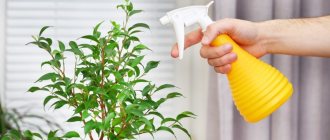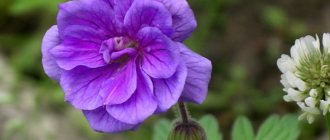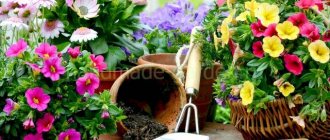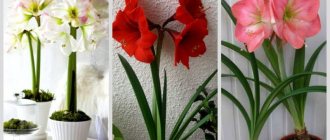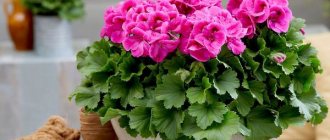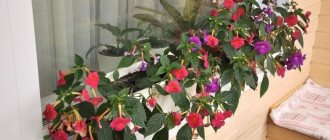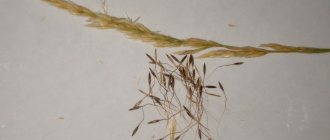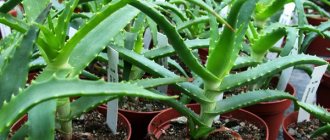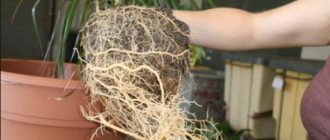No cozy apartment would be complete without house plants. Some bloom wildly and delight the eye, others remind of tropical countries, others curl, entwining everything with their greenery. What type of indoor plants to choose for your home to add zest to the decor?
Indoor plants can be divided roughly into flowering and non-flowering. The most popular are representatives of the flora, pleasing to the eye with their flowering. However, not all flowering plants can decorate a home for years.
Houseplants
Having chosen indoor indoor flowers, it is recommended to study their growing characteristics, watering regime, and the presence or absence of toxic substances in the juice of the green part. It happens that the housewife chooses a green beauty for her interior and is pleased with the carving of the leaf and its tall stature. Simultaneously with the appearance of a new potty tenant in the house, one of the family members may suddenly feel an attack of suffocation, especially with the windows closed. This is due to the fact that some plants emit toxic substances during their life, but attract people with their appearance.
Important! Such flowers can be safely kept in office premises in ventilated areas.
Types of indoor plants
From a scientific point of view, house plants are divided not only into flowering and evergreen. They can be classified according to a wide variety of criteria: according to climate zone, type of root system, method of reproduction and many others.
All indoor flowers are divided into three large groups:
- decorative flowering (spathiphyllum, anthurium, daffodils);
- decorative flowering potted plants (orchids);
- decorative deciduous (ivy, ficus, monstera).
Additional Information! Cacti are classified as a separate group, despite the fact that many of them are flowering, decorative, and potted.
Bulbous plants
Flowers propagated by bulbs are considered one of the most spectacular in appearance during the flowering period. Many are able to delight for a long time with bright colors and bizarre bud shapes. Among them are zephyranthes, clivia, amarcinum, ledeburia, villota, and hemanthus. All bulbous plants love warmth, light and moisture. Therefore, if a representative of this class does not bloom for a long time, you should pay attention to the composition of the soil, timely watering and the amount of sunlight received by the flower.
Clivia
Indoor trees
The so-called indoor trees have become widespread. They are miniature copies of wild giants, attracting the gaze of everyone who notices this miracle. The most popular representative is the Bonsai tree. Exotic appearance, strong trunk and thick green crown are all the advantages of this Chinese plant.
Important! If you want to add something unusual to your interior, it is not necessary to plant foreign trees - the domestic lemon tree has lush greenery and can produce small fruits throughout its life cycle.
Other equally well-known ornamental trees include: bottle tree, ficus, crassula (money tree), and rose.
Bromeliads
This is the name of flowers, mainly with short trunks and a bunch of leaves collected in a rosette. The most popular is pineapple. Almost all representatives of this class bloom with unusual flowers of bizarre shapes, which is what gave them such popularity: bromeliad, guzmania, acanthostachys, nidularium, tillandsia, vriesia.
Ampelous plants
Ampelias are home flowers with climbing shoots. They are planted in hanging pots, allowing the long branches to hang freely. Interior decoration in a vertical direction. Cissus belongs to the hanging variety; it is called indoor grape or climbing birch. It is widely distributed among vine lovers. Cissus does not bloom. There are a number of flowering ampelias, among which petunia, as well as surfinia, hoya and fuchsia, are popular.
Succulents
This class breaks all records of vitality. The most unpretentious plants, as a rule, do not require large pots and close attention. Designers like to use them in creating various compositions of potted flowers, because the pot can be successfully replaced with a glass hemisphere with a small amount of substrate.
Characteristics of Succulents
Succulents are plants of various families that grow well in dry soil and tolerate drought well thanks to the moisture stored in the succulent stems and leaves. Most succulents come from deserts and semi-deserts and are therefore tolerant of light, heat and drought.
Many of them are content with very little watering throughout their lives and cannot tolerate excessive humidity. They are undemanding and are therefore widely grown indoors, where they often grow better than in greenhouses, as they prefer dry air.
Many succulents are very decorative because of their shape, color and hairiness, and some species have beautiful flowers and brightly colored fruits.
The group of succulents includes not only cacti, but also agave, aloe, gasteria, thrush, thistle and other plants with succulent, watery stems and leaves.
Succulents can propagate by sowing, cutting, and grafting. Young plants are replanted annually, and older ones after 2-3 years.
When planting succulents, good drainage is essential. Soil nutrient content is not very important for these plants, as they grow naturally in thin, sandy soil. Store succulents in moderately warm rooms, on well-lit windowsills.
Aloe, centennial
Aloe is a plant of the lilac family. It grows relatively quickly and has branched stems. The leaves are without stems, oblong, curved, grooved, fleshy, light green, variegated in some species. The blade margins of the leaves are slightly spiny. Flowers sparsely, throwing a dart of small, tubular, fragrant, orange-pink flowers.
Spreads by cuttings and branches. The cuttings should be allowed to dry in the shade for two weeks before planting. Plants are transplanted and replanted after 2-3 years.
It is used as a house plant and has medicinal value.
cacti
Cacti are members of the cactaceae family.
All cacti grow very slowly; often plants of some species reach 40-50 cm in height only after several decades.
Cacti are decorative and varied not only in the shape of the whole plant, but also in hairiness, color, as well as very beautiful flowers and bright fruits. Due to their decorative qualities, compactness, and ease of cultivation, cacti are very widely used. During the flowering period, they should always be kept on one side, facing the sun, to avoid the flower falling off. After flowering, the plant should be regularly rotated very slightly around the axis of the pot so that it develops symmetrically.
Cacti reproduce by seeds, stem and root cuttings, shoots and grafting.
Use a small container for planting plants. The soil mixture consists of turf and leaf soil in equal proportions with the addition of a small amount of crushed moss, charcoal, sand, fine gravel and lime chips. Replant plants after 2-4 years, and to prevent rotting of the root system, water only on the 2-4th day after replanting.
For the growth of cacti, light, dry, well-ventilated rooms are required, regular but moderate watering in the summer; in winter, the plants are almost not watered. If there is too much moisture, cacti can die.
The following types of cacti are more common in culture: epiphyllia, phylocacta leaf, echinocacta, peiretia, prickly pear, cererus, echinopsis, aporocacta, astrophyte, hymnocalycium, lobivia, noctectacta, rebutia, ripalis, etc.
Used for landscaping, creating decorative corners, compositions, in vases, etc.
Large indoor flowers
Home indoor flowers blooming all year round
Large plants are often used to decorate offices, sales areas, lobbies, and lobbies. They enrich the air with oxygen and give comfort to non-residential premises.
Large plants
Indoor flowers with large leaves
Large-leaved flowers are also grown in apartments. The exotic look of spotted large greenery visually changes the interior, adding color. In small spaces, decorators tend to place one or two green accents. Favorites of modern trends are calathea, monstera, aphelandra, and fern.
Flowers with fleshy leaves
Crassula, or money tree, has thick, dense leaves. It does not grow quickly, but with the correct formation of the crown, you can achieve a striking resemblance to a tree. Many succulents, due to their ability to accumulate liquid in green tissues, have thick leaves. Zamioculcas can be safely included in the list of plants with fleshy, dense leaves.
Drug group
Lovers of indoor flowers notice their effects on health and mood. Some species have healing properties, so it is useful to place pots with such plants in work areas, bedrooms and children’s rooms.
Famous medicinal flowers:
- geranium;
- Sansevieria;
- Kalanchoe;
- aloe;
- Golden mustache.
Geranium occupies a leading place in floriculture. It attracts attention with bright caps of flowers, and the plant also purifies polluted air. Pelargonium with red petals has strong healing properties. It has a sedative and anti-inflammatory effect on the body. Medicinal decoctions from geranium normalize heart function, heal chronic diseases of the digestive tract, and lotions cleanse the skin of ulcers and boils.
Sansevieria is also called pike tail or mother-in-law's tongue. The plant kills infections that live in the air. A tincture on its leaves helps heal appendages, and decoctions strengthen the immune system during flu epidemics or other colds.
In Russia and neighboring countries, a particularly popular indoor flower is Kalanchoe, or homemade ginseng. It is used to treat fistulas, ulcers, boils and wounds. Juice is extracted from the leaves of the plant, which must be filtered and sterilized. Then a piece of gauze is soaked in it and applied to the sore spot. And to strengthen the immune system, you can eat one tablespoon of babies every day - growths that are cut from the leaves. They are also added to salads.
In the Russian botanical atlas there is another famous medicinal plant - aloe, or agave. Its juice heals wounds, softens corns, and cleanses the skin of acne. The liquid is added to face and hair masks, and whitening scrubs are prepared on its basis.
Golden mustache, or callisia, is also known for its healing properties. Decoctions and tinctures are prepared based on the leaves. They help with burns and lichen, speed up metabolic processes in the body and lower blood sugar levels. The golden mustache also eliminates the symptoms of heart disease, strengthens the immune system and normalizes the functioning of the gallbladder.
Small indoor plants
Among beautiful indoor flowers, miniature representatives of the flowering plant world occupy a special place. They were created artificially by breeders and are exact copies of their full-sized ancestors.
Mini violets
Types of ferns - indoor and house plants
The scientific name is dwarf synpolia. The leaves and the plant itself are several times smaller than the progenitor, but this does not affect flowering. Mini violets bloom as brightly and unforgettably as their full-sized relatives.
Miniature Kalanchoe
The bred miniature Kalanchoe will not grow more than 15 cm in height. Dwarfism did not affect flowering; these babies bloom with beautiful cream or red flowers.
Important! Decorativeness and miniature size do not complicate the process of caring for the plant. It still loves timely watering.
Mini gloxinia
Miniature gloxinias do not require special care and maintenance conditions. They bloom, like normal-sized gloxinias, in the summer. After flowering for the winter, the plant goes into a dormant period. The leaves die, leaving one tuber, from which a new green part will sprout in the spring, followed by flowering.
Mini roses
Potted beauties, reminiscent of their garden relatives, although smaller in size, have not lost their pink feature - a typical aroma. The plant blooms just as beautifully, with leaf shape identical to life-size roses. Apartment maintenance requires compliance with the temperature regime - mini-roses die at high temperatures. The optimal indicator for growing and flowering is +18˚С. Already at +22˚C the plant becomes hot and it may die.
Mini roses
Fittonia
A small indoor flower loves warmth and diffused bright light. Fittonia attracts with its interesting leaf pattern - clear white lines contrasting with the greenery make the foliage look like a quail's egg.
Soleirolia
An indoor flower with miniature leaves has ampelous shoots. Saltirolia does not require special care. As an addition to regular watering, spraying can be noted in the hot season.
Where is the best place to buy plants for your home?
It is better to buy indoor plants in large specialized stores. This is worth doing for several reasons.
Firstly, the variety of plants and the large selection among plants of the same species provide a good opportunity to purchase a healthy, proportionately developed plant. In a small store or in a random place, the assortment is not rich, and the plant may be in a single copy.
Secondly, in a specialized store, as a rule, the staff is well versed in the intricacies of indoor floriculture and will readily give advice on any question you may have.
Thirdly, in a large store you can purchase, in addition to the plant itself, all the necessary “horticulture-related” products, from high-quality soil and pots for replanting to fertilizers and a spray bottle.
An important detail: when buying a plant, pay attention that there is an annotation on the pot, which should indicate the full Latin name of the plant. Knowing this, if necessary, you can always read in the reference book about the features of agricultural technology of a particular type.
Popular flowering indoor plants
Indoor flowers and flowering plants with names
Despite all the diversity of flora suitable for indoor keeping, there is still a certain “standard set” of flowers living on window sills and in hanging flowerpots.
White indoor flower
Perennial spaciphyllum can be seen, if not in everyone, then in half of all flower growers. The perennial, which does not require special attention at all, pleases with its large white blooms. Breeders have developed varieties with large leaves. Giant spaciphyllums are not capricious; they bloom in the same colors as their classic relative.
Spathiphyllums of different sizes
Abutilone hybrid
Only gaining popularity is abutilon, a flowering tree-like flower. Can exceed human height. Flowering, depending on the variety, can be red, burgundy, orange, or coral.
Attention! To ensure abundant flowering, the plant should be placed on the sunny side of the home. Abutilon will survive in the shade, but will not show flowers.
Although he loves light, he cannot stand the heat. The maximum possible temperature in the spring and summer months should not exceed 22 degrees Celsius. In winter, this figure is even lower – +15˚С. With the beginning of the heating season, it is wiser to place the flower pot on a heated balcony, where it will be comfortable until spring.
Abutilon can be propagated by seeds collected after flowering. To obtain strong and disease-resistant plants, seed material must be hardened. They begin to sow in February - March, germination can take up to 3 weeks.
Gloxinia domestica
Close in appearance to violets, gloxinia has a significant difference - its root system is in the form of a tuber, and in winter it goes into rest. Each time after wintering, the tuber needs to be awakened in order to speed up the appearance of leaves, treating it with a solution of potassium permanganate for possible diseases and growth stimulants for active awakening. To help gloxinia recover from sleep, the tubers are placed on a peat cushion, regularly sprayed and kept at an air temperature of at least +23˚C. If the tuber looks wrinkled, with an uneven surface, it is no longer alive.
Gloxinia flowering
Important! Gloxinia does not tolerate direct sunlight; a lack of light will force the plant to elongate the stems and reduce the number of buds.
Venus flytrap
The predatory Venus actually hunts flies, thereby obtaining complementary food for itself, but this does not cancel regular watering. It is sensitive to the composition of water, so running water as a source is not suitable for it. The water must first be filtered. The flycatcher is light-loving and will not survive in the shade.
Calathea
The variegated beauty pleases with its leaves all year round. From spring to autumn it requires abundant watering and daily spraying. The most accessible calatheas for growing in apartments are Bachema, Veitcha, Makoya. Soft water without salt impurities is suitable for irrigation. You can replant the flower by carefully transferring it together with a lump of earth, having previously laid drainage on the bottom of the new pot. If you want to propagate the plant during spring replanting, dividing the bush is allowed. The shoots, along with the roots, are carefully separated from the main bush for subsequent planting.
Bokarneya - plant care
With proper care and timely watering, bocarney can live for about 7 years. This plant is unpretentious, takes root in apartments and easily tolerates the heating season. The only thing that can significantly harm a person from Mexico is drafts. In nature, there are three varieties of bocarnea, which differ in the length and shape of the leaves.
If you follow simple care recommendations, your plant will look as gorgeous as the bocarney, the photo of which is presented above. So, here are some tips that you should listen to if you decide to grow this unusual plant in your apartment.
- Firstly, being a native of a hot area, bocarnea loves light very much, so it is better to place the flower pot on the windowsill on the sunny side, and in the summer take it out onto the balcony.
- Secondly, sometimes it won’t be superfluous to spray the plant and wipe the leaves with a damp sponge, especially if the room temperature is very high.
- Thirdly, bokarneya does not require frequent watering. This should be done only when the soil dries out, about once a week.
- Fourthly, the plant must be fed during the period of active growth. Fertilize the soil once every two weeks after watering.
The tips listed will help anyone who has decided that their apartment should definitely be decorated with bocarney. Photos of this beautiful plant do not convey all its beauty. Therefore, we advise you to see this for yourself.
Houseplants that do not flower
Plants are not always planted indoors to contemplate the buds. Many evergreen representatives of the plant world that do not have flowers are loved by gardeners for their irresistible crown.
Cissus
Like wild grapes, it can grow over large vertical areas.
Ficus
The elastica variety has gained popularity for its dark glossy leaves. It grows into a fairly tall tree. There are varieties with weaving shoots.
Fern
With its gorgeous green spreading leaves, it reminds you of the tropics and creates a jungle atmosphere.
Characteristics of aquatic plants
A special group is formed by aquatic and marsh plants. Currently, they are very important for humidifying indoor air when using central heating systems. Most aquatic plants can be grown in aquariums in combination with aquatic animals and fish. Typically, aquatic plants reproduce by seeds, cuttings, root shoots and division.
Maintaining plants in an aquarium first requires maintaining the water level. For runaway plants, thinning by removing wilted and old plant parts first. Reboot in the spring. All aquatic plants grow well under optimal light and air conditions.
The following types of plants are grown in aquariums and ponds: Zaitsera, Elodea, Vallisneria, Cabomba, Ludwigia, Myriophyllus, Sagittarius, Salvinia, Aurus, rice, etc.
Tropical home flowers
Tropical representatives of the plant world surprise not only with their unusual appearance, but also with their non-standard way of keeping them.
Blue Tillandsia (Tillandsia cyanea)
One of the representatives of non-standard cultivation - some of its types are fixed on a board or driftwood.
Tillandsia blue
Homemade banana
It grows 1 meter in height in just a year, and with sufficient humidity and high temperature it can bloom and even bear fruit.
Streptocarpus
Important! A flowering tropical plant that requires abundant watering and frequent spraying.
The variety of species allows you to choose the flowering you like most: from cornflower blue to bellflower.
Advantages and disadvantages of plants in the interior
Indoor plants purify the air and improve the indoor climate in a natural way. The green color of the leaves has a beneficial effect on the psyche, calms, and suppresses excitement. Many species have healing properties, are used as aromatic seasonings, moisturize the air, and smooth out temperature changes.
Plants with massive leaves will look great in the kitchen interior. They are able to absorb harmful impurities and unpleasant odors. They are easy to care for - just wipe off the dust on the green surface. The walls of the dining room and the upper cabinets of the set can be decorated with flowerpots with fast-growing vines. Particularly hardy species will take place near the stove, away from the window. Decorative plants in the kitchen will delight you not only with stunning flowers, but also with unusual fruits. Peppers and citrus fruits are often grown on the windowsill.
Flowering plants should be placed in the bedroom interior. With their stunning appearance, they are able to set household members to a positive perception of what is happening and create a joyful atmosphere. Thanks to tall and climbing plants, you can visually raise the ceiling and organize unobtrusive zoning. Herbaceous and woody vegetation is suitable for this purpose. The background for them can be walls or furniture.
It is necessary to purchase a particular crop only if you are fully confident that suitable growing conditions have been created for it. All parts of indoor flowers should look perfect. The only drawback of landscaping is the need for constant monitoring of the condition of the plants, careful care taking into account the requirements of each flower.
